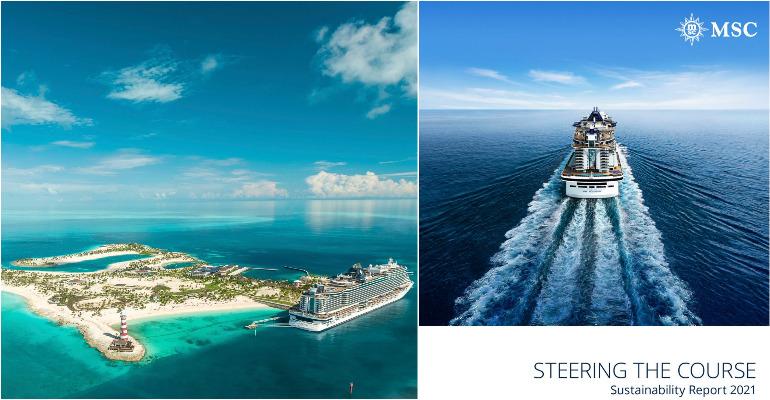‘While navigating our way through the extraordinary turbulence of the past two years, we have kept focused on sustainable business practices and on protecting our guests, employees and the communities in which we operate,' remarked Pierfrancesco Vago, executive chairman, MSC Cruises. ‘Today more than ever, we recognise the vital importance of our environment, and a healthy and viable planet. We are firmly committed to achieving our long-term goal of zero-impact cruise operations by 2050 and we are well advanced on this journey.’
The executive chairman went on to say, ‘As a company and an industry we are investing heavily in the accelerated development of environmental technologies and solutions that don’t exist just yet to make these objectives achievable.
‘It must be recognized that for this endeavor we also need the full engagement of governments and other public and private entities to ensure, for example, that the right infrastructure exists on land and green fuels become available at scale for our ships around the world. This we cannot do alone.’
MSC Cruises' Sustainability Director Linden Coppell added, '...We have established clear metrics against which to measure progress. Through our future annual sustainability reports we will be held to account in achieving our targets.’
Reaching net-zero
In 2021, the line trialled new energy saving techniques on MSC Grandiosa, cutting emissions by 8% compared to design performance and the aim is to replicate the measures across the rest of the fleet.
By the end of 2021, 14 vessels were fitted with hybrid exhaust gas cleaning systems, reducing SOx by 98% while three of MSC Cruises' newest ships have selective catalytic converters, converting NOx into nitrogen and water.
The end of 2021 also saw seven of the line's 19 ships, including all its new ships, fitted with shore power capability.
An average speed reduction of over two knots, compared to 2019, was implemented last year to lower emissions following a review of the line’s itineraries.
Shore excursions
The line continued to offer shore excursions with strong sustainability principles – ‘Protectours’ – with 70% of these consisting of low impact transportation, such as walking, cycling or kayaking, with some making a direct contribution to the environment through supporting species or habitat protection.
As well as partnering with Travelife to deliver training and capacity building for tour operators, it started working with several NGOs to identify new ways of avoiding whale strikes.
Terminals
The construction of a new MSC Cruises terminal in Miami began in the summer of 2021 with a comprehensive environmental and social management system.
The line said it is ‘committed’ to meeting Leadership in Energy and Environmental Design (LEED) certification for all new terminals it invests in.
A new MSC Cruises terminal is under construction in Barcelona and is due to be operational in 2023, with The Durban Cruise Terminal in South Africa operational since December 2021.
Resource use and waste
The line will seek to reduce onboard water demand by 3% per year for each ship by monitoring usage, fitting water saving technologies, and training and educating crew.
In 2021, 100% of ballast water was filtered and UV treated before being discharged at sea to prevent harmful aquatic organisms and pathogens entering the environment.
Copyright © 2024. All rights reserved. Seatrade, a trading name of Informa Markets (UK) Limited.
Add Seatrade Cruise News to your Google News feed.  |

